Measuring & Layout Tools
Cordlesspowertools Canada Online stores have a wide range of Measuring & Layout Tools Products that are available in different types and prices. Popular brands like Bosch, Dewalt, Hitachi, Dongcheng, Cumi, KPT, Ferm, Black Decker, Makita, Jon Bhandari, Ken, Metabo, Bullet, Planet Power, Stanley, Maktec, Ralli Wolf, AOG, Falcon, Hit-Min, IDeal, Eastman, Fein, Electrex, Craftsman, AEG, Zogo, Xtra Power, DCA, Yuri have a vast range of models available with different designs and functionalities. You can easily browse through the products, compare them and choose the one that best fits your needs.
-
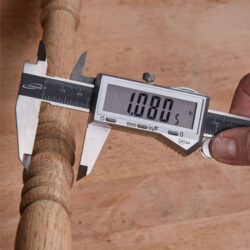
Calipers (1)
-
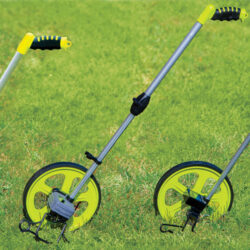
Measuring Wheels (1)
-
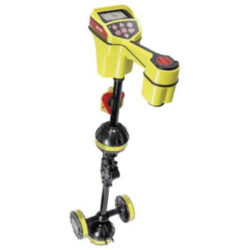
Pipe Locators (1)
-
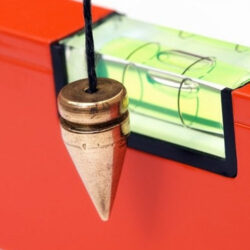
Plumb Bobs (1)
-
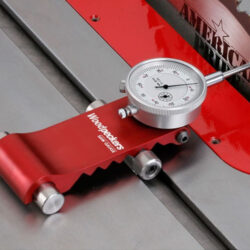
Saw Gauges (1)
-
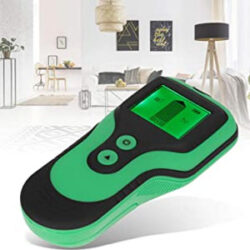
Scanners & Testers (1)
-
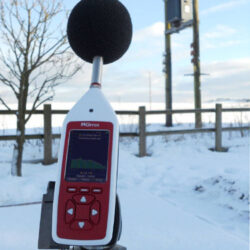
Sound Measurement (1)
Precision at Its Best: Measuring & Layout Tools for Every Project
When it comes to accuracy and precision in any project, measuring & layout tools are essential. Whether you’re a professional or a DIY enthusiast, using the right tools like vernier calipers, multimeters, and tape measures ensures that every measurement is spot-on. In this guide, we’ll explore some of the most commonly used measuring tools, their features, and how they can help you achieve better results.
The Importance of Accurate Measurement & Layout Tools
Measuring and layout tools are crucial for any project where precision matters. From simple DIY tasks to complex engineering projects, tools like calipers, multimeters, and tape measures provide accurate readings that ensure the success of your work. Here are some of the must-have tools to consider for your toolkit.
Vernier Caliper: For Precise Linear Measurements
The vernier caliper is one of the most reliable tools for measuring internal and external dimensions. The vernier caliper scale allows users to take extremely precise readings, making it a go-to for professionals who need exact measurements. It’s commonly used in engineering, machining, and scientific applications where accuracy is critical. Its ability to measure up to fractions of a millimeter or inch makes it indispensable for projects requiring fine precision.
Multimeter: Testing Electrical Circuits
A multimeter is an essential tool for anyone working with electrical circuits. It measures voltage, current, and resistance, making it ideal for diagnosing issues in electrical systems. Whether you're a professional electrician or troubleshooting a DIY electrical project, a multimeter is a tool you can’t afford to skip.
Features of Must-Have Measuring & Layout Tools
- Vernier Caliper: Offers precision up to fractions of a millimeter or inch, making it ideal for fine measurements in both engineering and machining.
- Multimeter: Perfect for measuring electrical current, voltage, and resistance, essential for electricians and those working with electronics.
- Tape Measure: A versatile tool used for measuring distances, lengths, and circumferences. Modern tape measures include inch tape for measuring in different units.
- Micrometer: For even more precise measurements, especially in mechanical and engineering tasks, the micrometer is the tool of choice.
- Feeler Gauge: Measures gap widths, commonly used in mechanical engineering and automotive applications.
- Plumb Bobs: Help in determining vertical alignment, often used in construction and surveying projects.
- Scanner & Testers: Used for diagnostics in various industries, including automotive and home inspections.
Tape Measure: Versatile and Essential for Everyday Tasks
The tape measure is one of the most commonly used measuring tools. It’s ideal for a wide range of applications, from measuring the dimensions of furniture to taking accurate measurements on a tape measure for construction projects. Available in various lengths and units, including inch tape, this tool is essential for quick and accurate readings.
Cylinder Measurement: Accurate Volume Readings
For more specific applications like automotive or industrial tasks, cylinder measurements are crucial. Tools like micrometers and vernier calipers provide the precision required to measure cylinder bores, ensuring that machinery and components operate effectively.
How to Choose the Right Measuring Tools
When selecting measuring and layout tools, it’s essential to consider the level of precision required for your project. For everyday tasks, a simple tape measure will suffice. However, for tasks requiring higher accuracy, tools like vernier calipers and micrometers are essential. Additionally, tools like plumb bobs help ensure vertical alignment, while multimeters are indispensable for electrical work.
Key Features to Look For in Measuring Tools
- Durability: Ensure the tool can withstand regular use without wearing out.
- Accuracy: Precision is crucial, especially for tasks that demand exact measurements.
- Ease of Use: Look for tools with clear scales, like a vernier caliper scale, for easy reading.
- Versatility: Tools like multimeters and tape measures are versatile and useful across a range of applications.
- Affordability: While accuracy is key, choosing cost-effective tools that offer value is also important.
Conclusion
Investing in quality measuring & layout tools is essential for ensuring accuracy and precision in any project. Whether you need a vernier caliper for precise measurements, a multimeter for electrical testing, or a simple tape measure for everyday tasks, having the right tools can make all the difference. By selecting durable, accurate, and easy-to-use tools, you’ll ensure the success of your project, whether at home or in a professional setting.
Explore the wide range of top-rated measuring tools today and find the perfect fit for your needs!
Precision at Its Best: Measuring & Layout Tools for Every Project
When it comes to accuracy and precision in any project, measuring & layout tools are essential. Whether you’re a professional or a DIY enthusiast, using the right tools like vernier calipers, multimeters, and tape measures ensures that every measurement is spot-on. In this guide, we’ll explore some of the most commonly used measuring tools, their features, and how they can help you achieve better results.
The Importance of Accurate Measurement & Layout Tools
Measuring and layout tools are crucial for any project where precision matters. From simple DIY tasks to complex engineering projects, tools like calipers, multimeters, and tape measures provide accurate readings that ensure the success of your work. Here are some of the must-have tools to consider for your toolkit.
Vernier Caliper: For Precise Linear Measurements
The vernier caliper is one of the most reliable tools for measuring internal and external dimensions. The vernier caliper scale allows users to take extremely precise readings, making it a go-to for professionals who need exact measurements. It’s commonly used in engineering, machining, and scientific applications where accuracy is critical. Its ability to measure up to fractions of a millimeter or inch makes it indispensable for projects requiring fine precision.
Multimeter: Testing Electrical Circuits
A multimeter is an essential tool for anyone working with electrical circuits. It measures voltage, current, and resistance, making it ideal for diagnosing issues in electrical systems. Whether you're a professional electrician or troubleshooting a DIY electrical project, a multimeter is a tool you can’t afford to skip.
Features of Must-Have Measuring & Layout Tools
- Vernier Caliper: Offers precision up to fractions of a millimeter or inch, making it ideal for fine measurements in both engineering and machining.
- Multimeter: Perfect for measuring electrical current, voltage, and resistance, essential for electricians and those working with electronics.
- Tape Measure: A versatile tool used for measuring distances, lengths, and circumferences. Modern tape measures include inch tape for measuring in different units.
- Micrometer: For even more precise measurements, especially in mechanical and engineering tasks, the micrometer is the tool of choice.
- Feeler Gauge: Measures gap widths, commonly used in mechanical engineering and automotive applications.
- Plumb Bobs: Help in determining vertical alignment, often used in construction and surveying projects.
- Scanner & Testers: Used for diagnostics in various industries, including automotive and home inspections.
Tape Measure: Versatile and Essential for Everyday Tasks
The tape measure is one of the most commonly used measuring tools. It’s ideal for a wide range of applications, from measuring the dimensions of furniture to taking accurate measurements on a tape measure for construction projects. Available in various lengths and units, including inch tape, this tool is essential for quick and accurate readings.
Cylinder Measurement: Accurate Volume Readings
For more specific applications like automotive or industrial tasks, cylinder measurements are crucial. Tools like micrometers and vernier calipers provide the precision required to measure cylinder bores, ensuring that machinery and components operate effectively.
How to Choose the Right Measuring Tools
When selecting measuring and layout tools, it’s essential to consider the level of precision required for your project. For everyday tasks, a simple tape measure will suffice. However, for tasks requiring higher accuracy, tools like vernier calipers and micrometers are essential. Additionally, tools like plumb bobs help ensure vertical alignment, while multimeters are indispensable for electrical work.
Key Features to Look For in Measuring Tools
- Durability: Ensure the tool can withstand regular use without wearing out.
- Accuracy: Precision is crucial, especially for tasks that demand exact measurements.
- Ease of Use: Look for tools with clear scales, like a vernier caliper scale, for easy reading.
- Versatility: Tools like multimeters and tape measures are versatile and useful across a range of applications.
- Affordability: While accuracy is key, choosing cost-effective tools that offer value is also important.
Conclusion
Investing in quality measuring & layout tools is essential for ensuring accuracy and precision in any project. Whether you need a vernier caliper for precise measurements, a multimeter for electrical testing, or a simple tape measure for everyday tasks, having the right tools can make all the difference. By selecting durable, accurate, and easy-to-use tools, you’ll ensure the success of your project, whether at home or in a professional setting.
Explore the wide range of top-rated measuring tools today and find the perfect fit for your needs!
